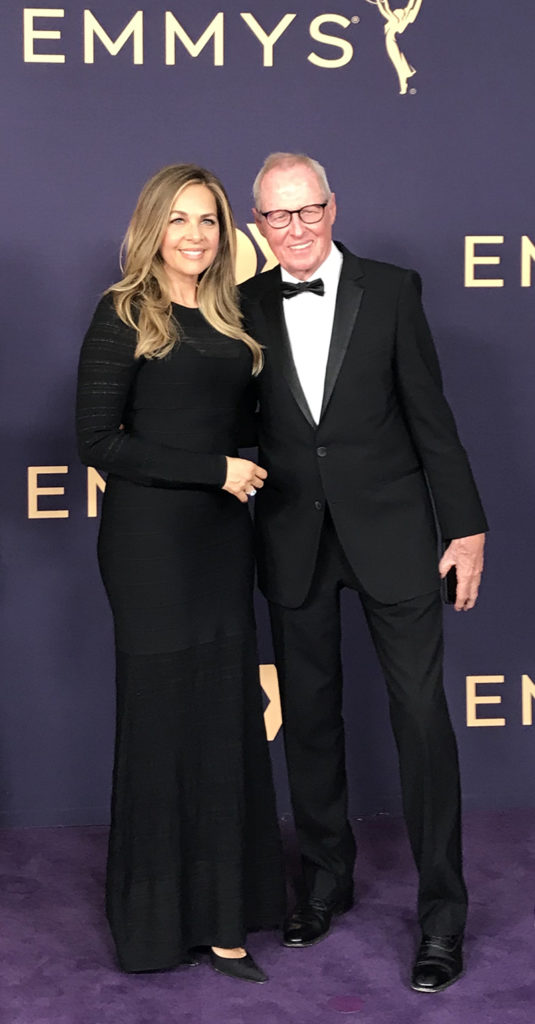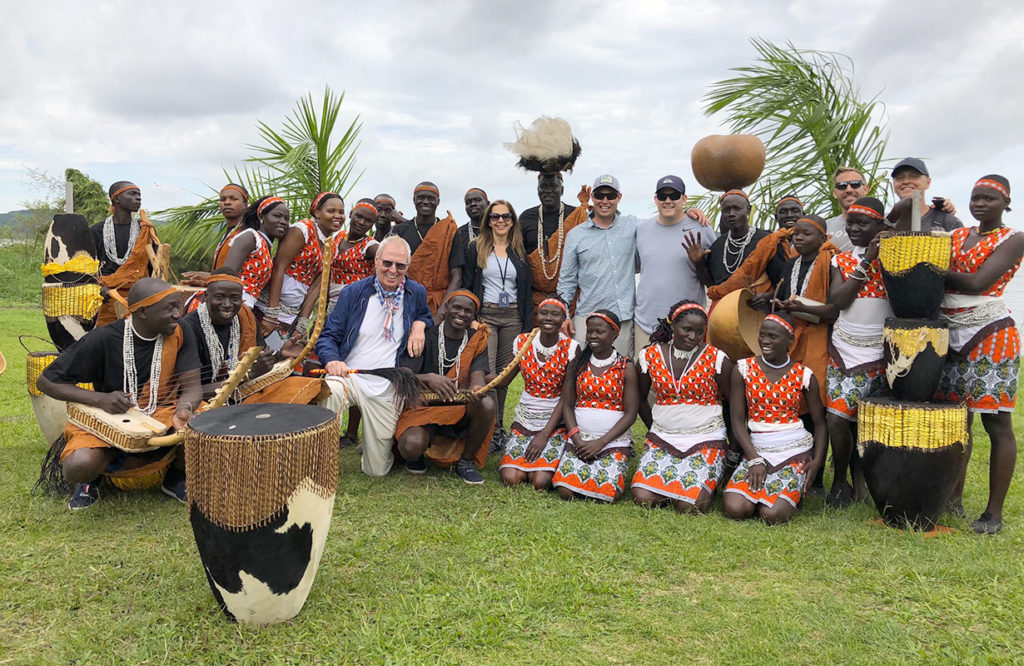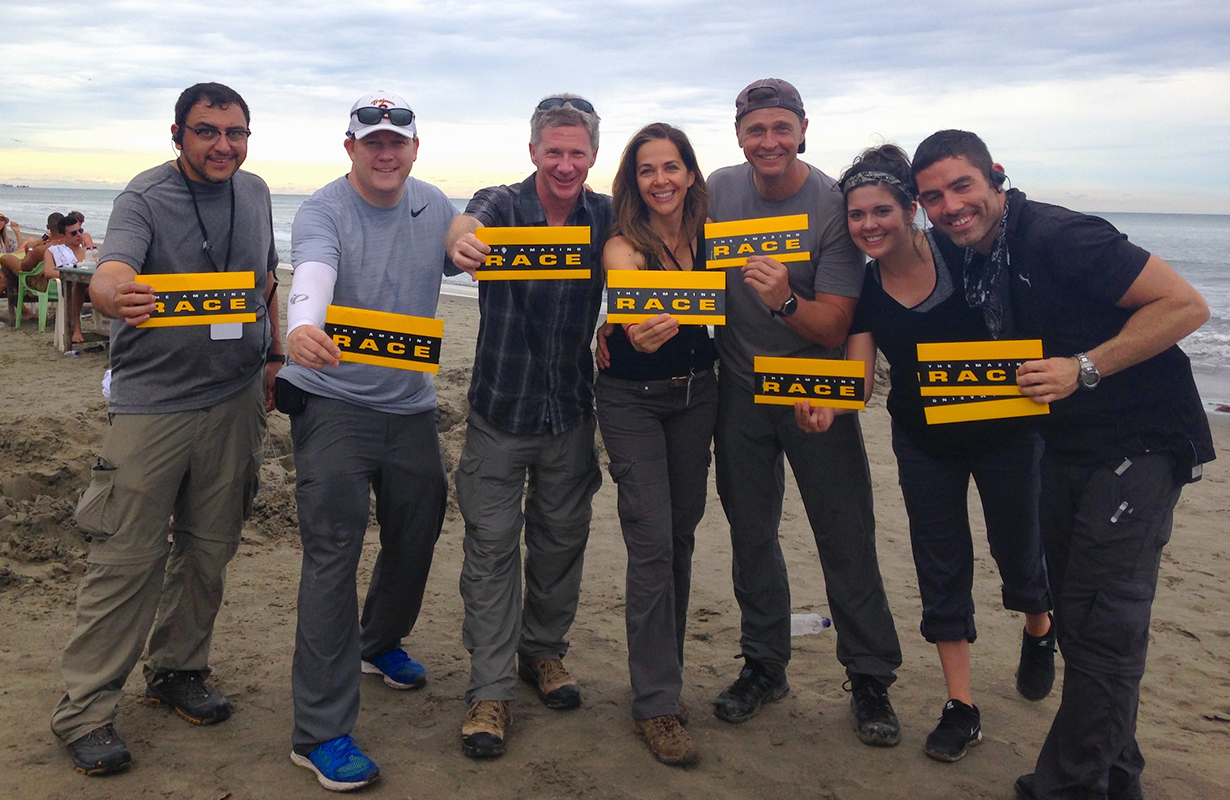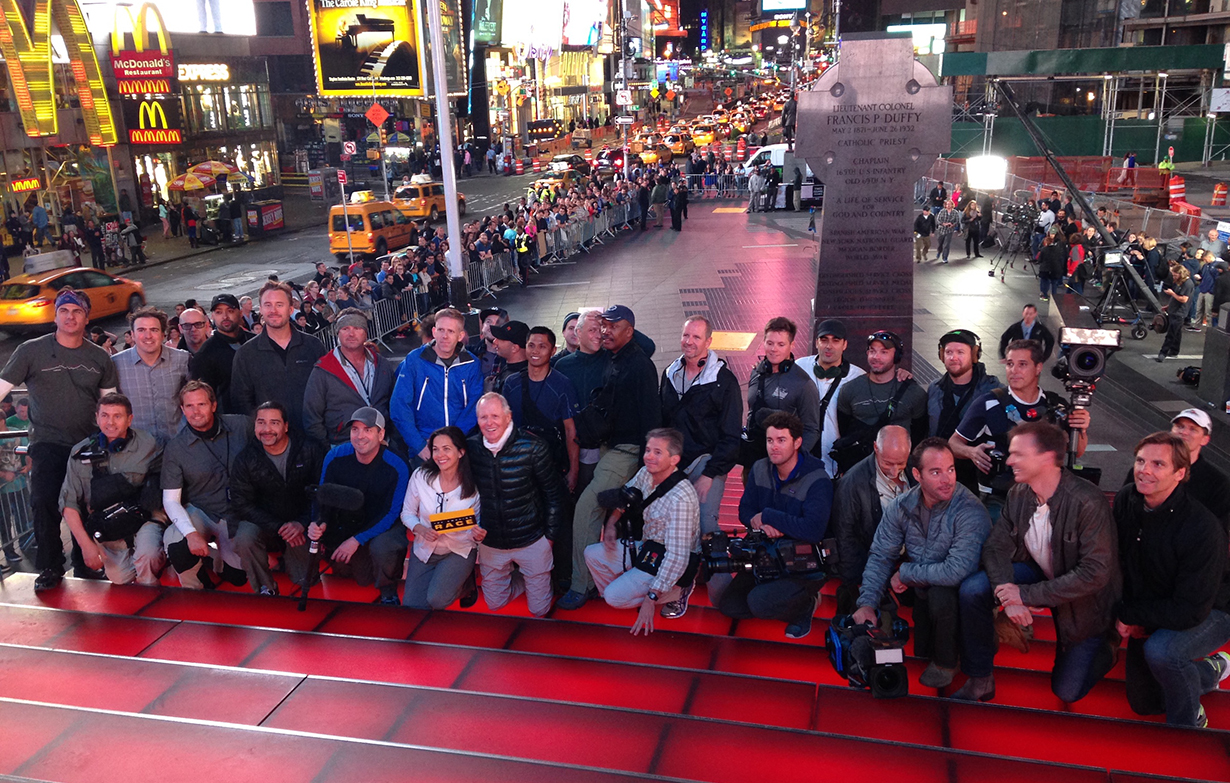

by Vanessa Machir
What’s the ultimate test of a relationship? Hollywood thinks it might be The Amazing Race, a reality show that challenges pairs of contestants to traverse the globe and complete intense tasks for a million-dollar prize. They could be asked to bungee jump off a bridge or race up and down hundreds of ancient steps. Or they might find themselves speed-eating sauerkraut or hand-painting Venetian Carnival masks.
“We put you in a pressure cooker,” says the show’s co-creator and co-executive producer Elise Doganieri, Advertising Design ’90.
The Amazing Race has aired 31 seasons. Its many successes, including 10 Emmy Awards for outstanding reality competition and seven international versions, make it clear that Doganieri knows exactly what people want to watch—but she didn’t get her start in TV. She worked as a graphic designer before launching internet consulting and design firm Open-I-Media in Tribeca in 1992.
Doganieri decided to use the extra wall space in her office to display local artists’ works. In 1995, a producer filming in the neighborhood, Bertram van Munster, asked to rent a painting from her for a scene. “That producer is now my husband,” she says. “I actually didn’t let him use the painting. If he ruined it, his production budget couldn’t afford it.” But he still invited her to dinner with his crew.

A few years later, she moved to LA to be with van Munster. Her first foray into TV was working with him as producer on the pilot of Wild Things, a nature documentary series, filming wildlife, coordinating logistics, and scouting local experts in Africa and Alaska. “I thought, ‘This is the life for me,’” she says.
Doganieri came up with the idea for The Amazing Race on a bet. She was complaining to van Munster about the lack of new ideas in the industry when he said, “Why don’t you come up with a show? I’ll give you five minutes.” Her idea was inspired by a post-graduation backpacking trip through Europe with her FIT roommate Laurie Casey, Packaging Design ’91.
“It was the most incredible adventure I ever had,” she says of that five-week vacation. But she also remembers the downside of traveling with a close companion for so long. “I was more high strung and she was super chill. We needed breaks … and at the end of the day it was so good to get together and have a nice dinner.”
Watch: A conversation with Elise Doganieri.
So she imagined a race across the world, in which pairs of travelers must complete extreme mental and physical challenges on a nail-biting time-frame—and she took away that alone time that usually keeps travelers sane. Amid a brutal itinerary, there are no breaks from your companion—usually a close friend, family member, or partner—or even the film crew. Sometimes, contestants struggle to find a minute to visit the bathroom.
Doganieri and van Munster pitched the show to ABC, CBS, NBC, and Fox in early summer of 2000. All the networks wanted it in some form, but CBS “was the one network that loved the concept as it was,” she says. By August of that year, they were scouting locations for the first season. “I was standing in front of the Taj Mahal, thinking, ‘What has happened to my life?’” The show premiered six days before September 11, 2001. Doganieri was scouting in Morocco when the towers were hit. “I didn’t know if anyone would want to travel after that. It was a scary time.”
The show did get picked up for a second season. Nineteen years later, filming at Angkor Wat or the Arc de Triomphe is all part of a normal workday.
Over 20 years, the Amazing Race has filmed in just about every corner of the Earth.
Contestants head to a series of international locations, advancing by completing tasks designed to test every aspect of contestants’ personalities and skill sets. Each success moves contestants closer to the finish mat and host Phil Keoghan. Meeting him in first place at the end of an episode lets them depart first for the next leg—and the team that comes in last each week is usually eliminated. The first team to arrive at the end of the show wins the million-dollar prize.
Contestants are given an extremely limited budget. They’re not allowed cell phones, though they can ask locals to Google or make a call for them. They also can’t bring any navigational aids on the show, but they can choose to purchase them with their stipends.
To keep the show fresh, Doganieri says, “We try to come up with one or two things per season that are going to be different.” In season 12, for example, they added U-Turns, chances for a team to stall another team by assigning them extra tasks. In season 31, teams were asked to vote on who should be U-Turned. Sometimes, even the traditional contestant pool—regular people who come in pairs of their own choosing—is disrupted. The show has featured everyone from reality TV stars to influencers to complete strangers.

While the constant reimagining and reevaluation of the format adds excitement, part of the show’s enduring appeal is that there’s almost nothing else like it. “Nobody thought it could be done,” Doganieri says. Someone hypothesized that she was able to imagine such a show because she didn’t come from the TV industry, so her mind was more open. “When it aired, people were blown away,” she says. “It’s like the world is a scavenger hunt.”
Planning this epic scavenger hunt is intense. “You have to be very organized, because everything you do costs money,” Doganieri says. Each season is conceived in about four months of pre-production, and she starts with an old-school tool. “We have a map that’s 15 feet wide and 10 feet high. We start to lay out a route with push pins and string.”



